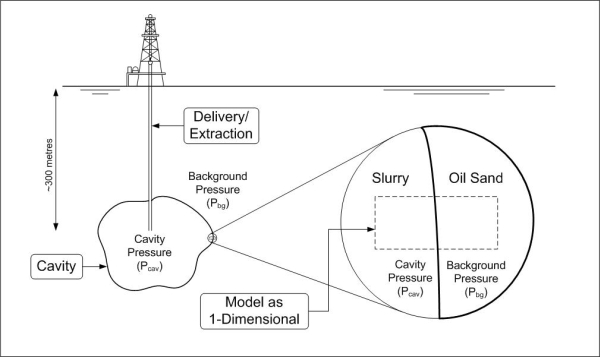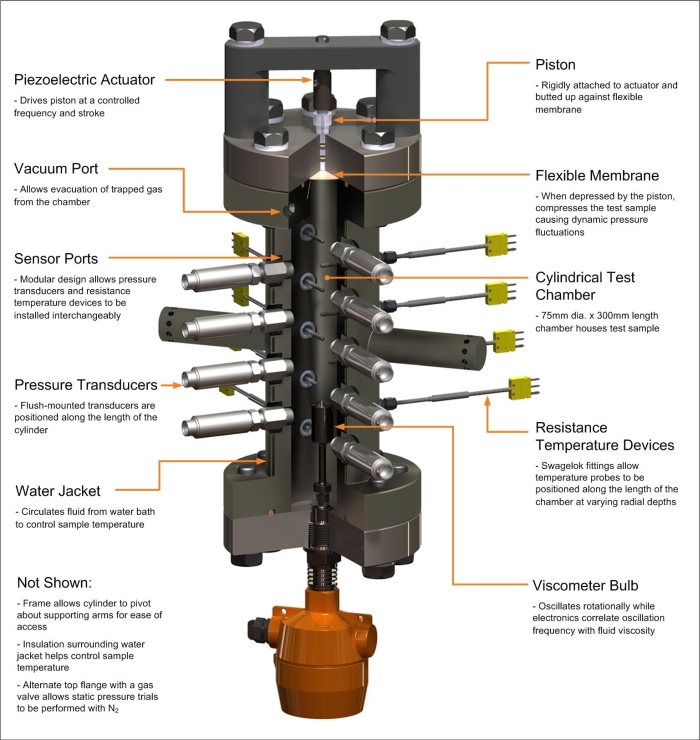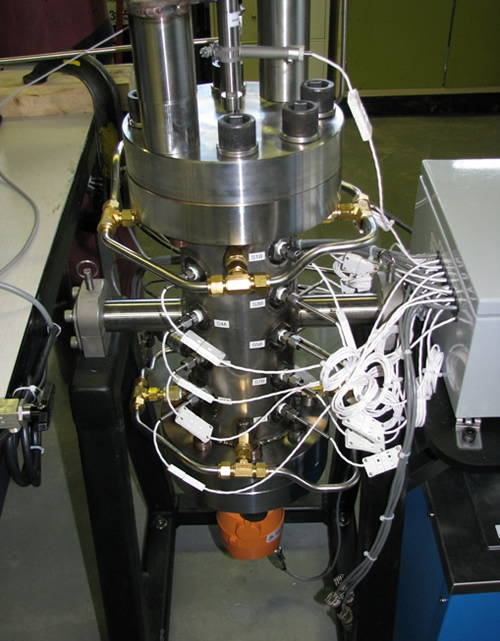PDFs & Technicians Graduates Undergraduates Past Students
Marc Evans

BASc. : University of Ottawa (2007)
M.Sc. : University of Alberta : Start Date Sept 2007
Supervisors
Dr. David S. Nobes, Dr. Michael G. Lipsett
Description of the Research Project
Oil Sand Viscosity Measurement
The overall aim of this research project is the development of a new technology for intermediate depth in-situ oilsand production.
Since the long term project is still in its infancy, some fundamental knowledge regarding the fluid behaviour of oilsand must be known before any significant process or machinery concepts can be developed. My work is centered around characterizing the viscous behaviour of oilsand so one of my major goals is the development of a measurement apparatus capable of delivering this information. Have a read through this page if you are interested in learning where we are in the project.
The characterization of the fluid behaviour of a large ore body is quite a daunting task so we looked for areas where we could simplify the problem. Since it is expected that the final in-situ process will work at an interface between a subterranean cavern and the ore body, we are able to reduce the problem of a large 3-dimensional ore body to a 1-dimensional case by looking at a section of this interface. See the figure below for clarification.

Schematic Illustrating how the 3-Dimensional Problem can be Reduced to a 1-Dimensional One.

CAD Rendering of Test Chamber as it would be set up for a Dynamic Pressure Experiment.

Fully Assembled Chamber and Instrumentation (Without Insulation).
Test Chamber Design
We have designed a cylindrical test chamber to model this 1-dimensional case. The rig is capable of controlling the temperature and pressure (both dynamic and static) of the enclosed sample whilst monitoring viscosity, temperature, and pressure. The CAD rendering below shows the major components of our initial chamber design. A system schematic showing the instrumentation is included below as well.
The rig was built in-house by the Mechanical Engineering Department's machine shop and has since been commissioned using a number of viscosity standards. The pictures below show some of the manufacturing as well as the fully assembled chamber and instrumentation.
Chamber Update (Sept. 2009): Somewhat surprising results from our experimentation on the compressibility of fluids at low pressures has forced us to redesign the dynamic pressure actuation system. The retrofit will enable us to reach much higher dynamic pressures by relying on the hydraulic ram of an MTS tensile testing machine to provide the compression strokes. I will post an picture as soon as the retrofit is complete.
Monitoring & Control and Post-Processing Software
Due to the large volume and the very low thermal diffusivity of the other fluids to be tested, long heating times are required for the samples to reach a homogeneous temperature. For this reason it was decided that experiments would best be run autonomously using a monitoring and control program.
The software was written using National Instruments' LabWindows/CVI programming environment. Key features of the program include:
- Manual and Autonomous Operation
- Continuous logging of data from all instruments
- Able to send setpoint commands to all instruments
- Autonomously runs user-defined parametric experiments over any length of time
- Graphical representation of the current instrumentation configuration
- Real-time device readouts and graphs
- Multi-threaded
- Remote monitoring via webcam
A post-processing program for treating the experiment log files has been developed using MATLAB. Key features of this program include:
- Post-processing analysis of experiment data (filtering, averaging, etc)
- Data plotting
- Graphical user interface